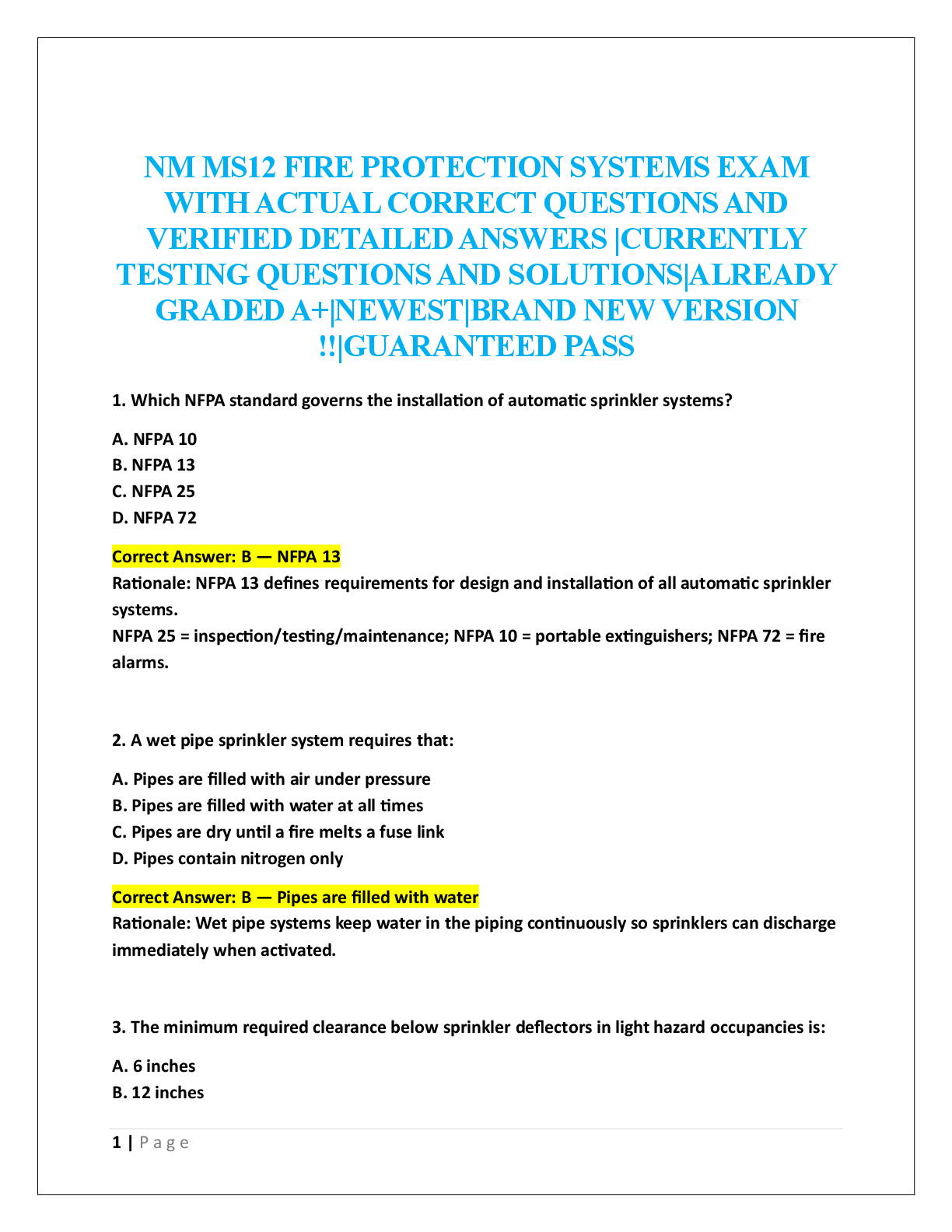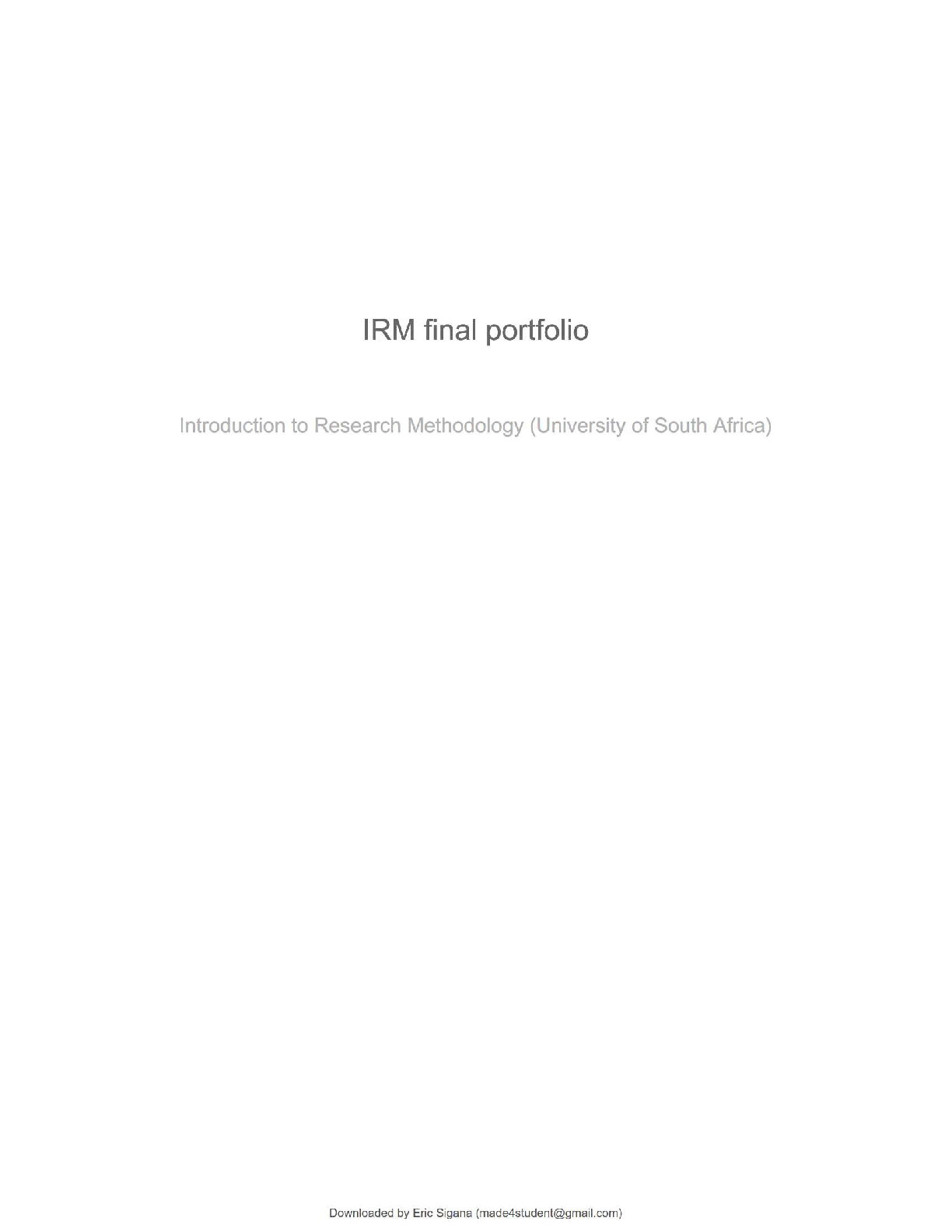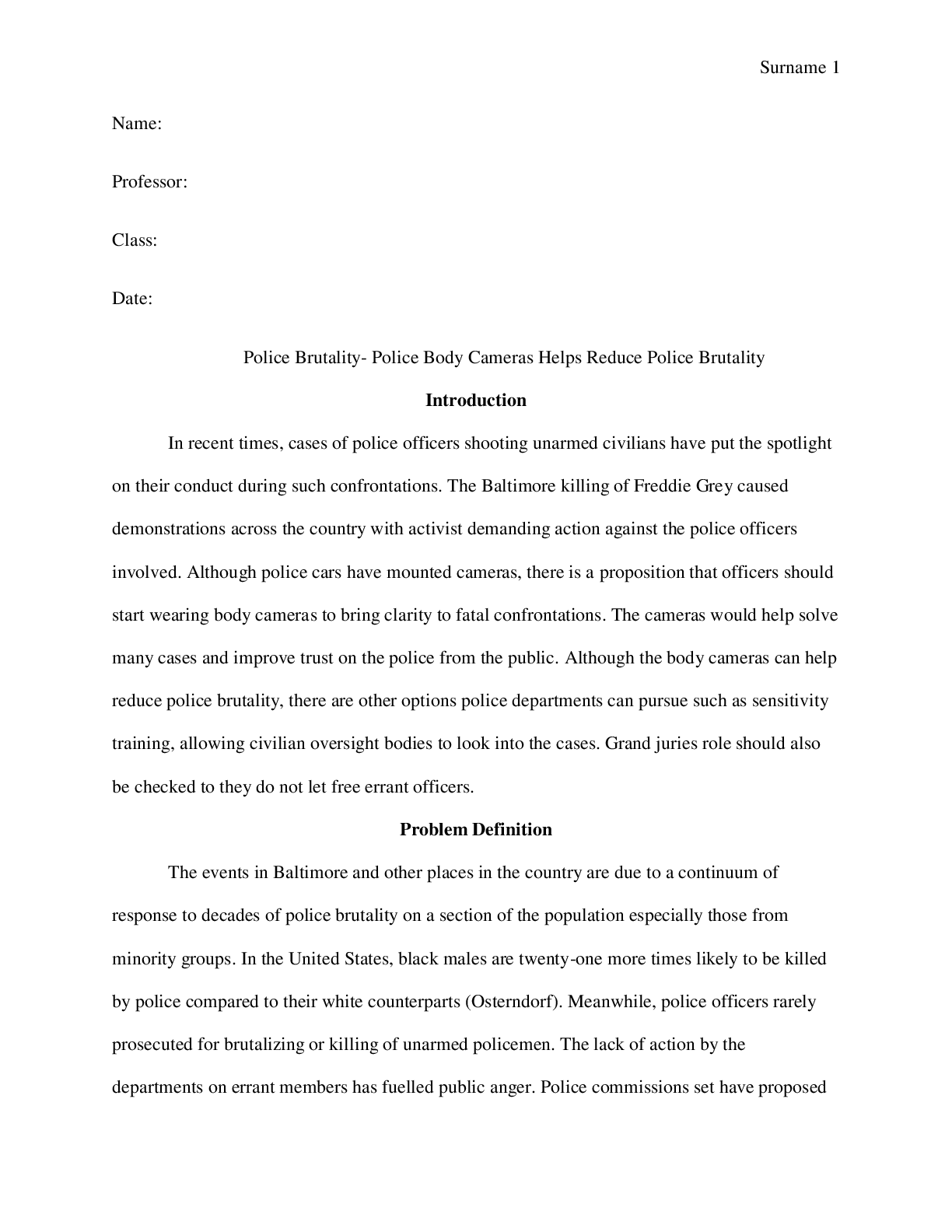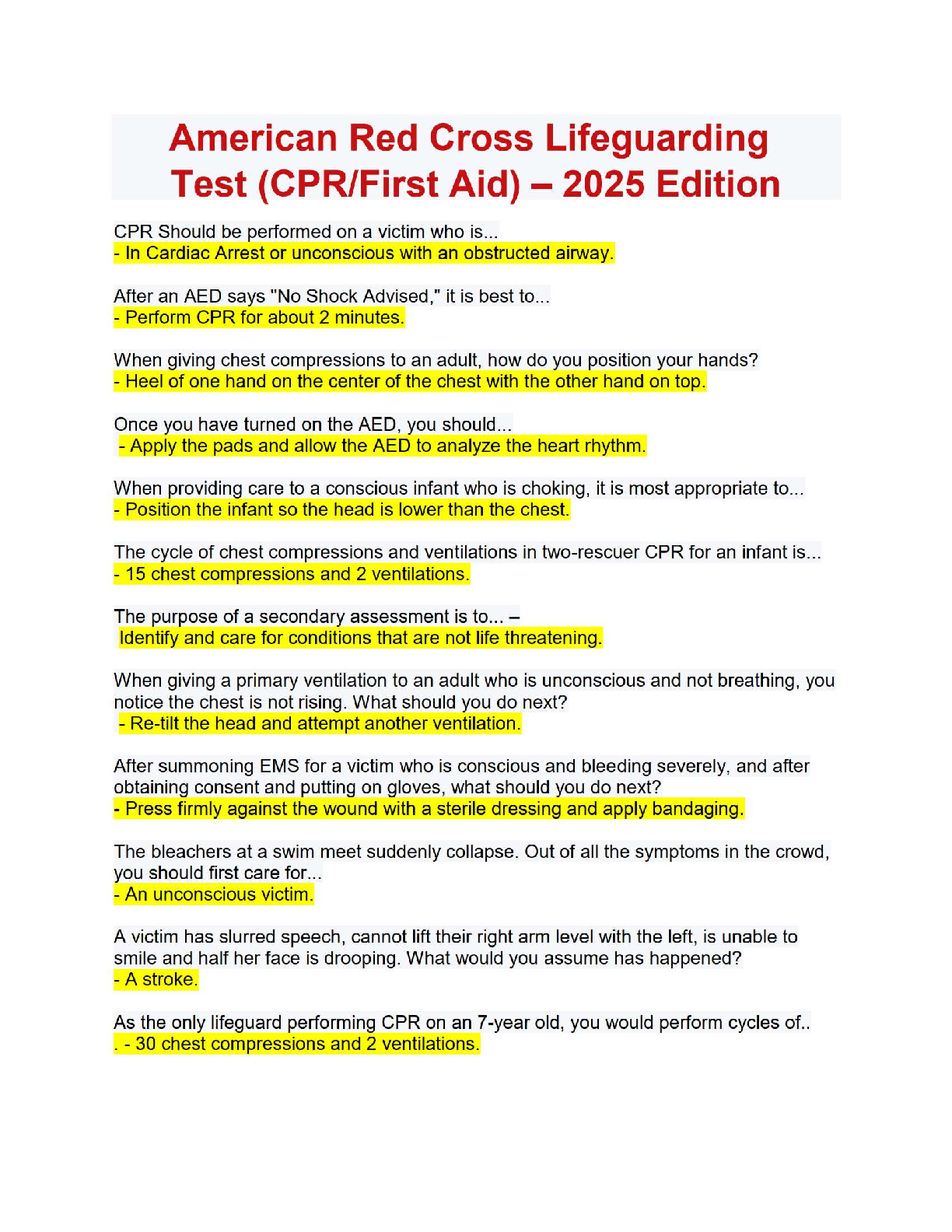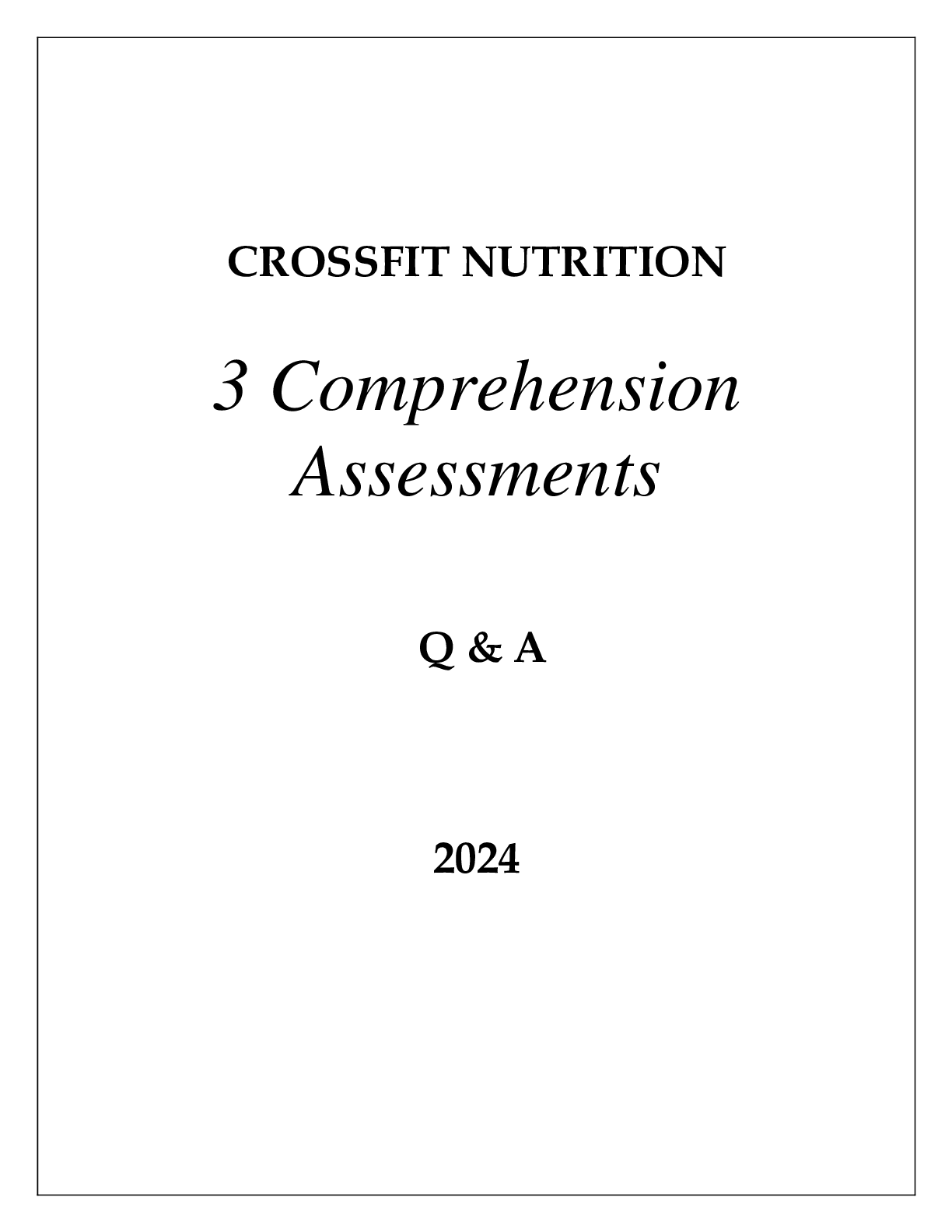Social Sciences > ESSAY > Compare and Contrast the Purpose, Mechanics, Strengths, and Weaknesses of Field, Experimental, and S (All)
Compare and Contrast the Purpose, Mechanics, Strengths, and Weaknesses of Field, Experimental, and Survey research SOSC 366: Research Methods in the Social Sciences (Rev. C6)2
Document Content and Description Below
Compare and Contrast the Purpose, Mechanics, Strengths, and Weaknesses of Field, Experimental, and Survey research SOSC 366: Research Methods in the Social Sciences (Rev. C6)2 Introduction An anal ... ysis of the field, experimental and survey methods of research is very important for researchers, when they decide which method is the best to use for their study. This essay aims to explore and describe these three research methods. For each of them, I propose the main purpose of research, suggest the appropriate use of methods, introduce the mechanisms, involved in conducting a research, and explore the strength and weaknesses of each approach. In addition, I review some of the similarities and differences between the methods. Main purposes of these three methods Main purpose of field research is to observe the researched subject, to collect data to analyze it, to explain people behavior, and to establish the cause-and-effect relation between two variables, the dependent variable and independent variable. To accomplish this goal, an experiment manipulates one variable while a second variable is measured and other variables are controlled (Babbie & Benaquisto, 2009). Main purpose of experimental study is to examine cause-and-effect relationships between a well-defined set of independent variables, when one or more independent variables are manipulated by researchers, in laboratory or field settings (Bhattacharjee, 2012). Historically, the primary purposes of survey research, according to Ponto (2015), was to obtain information describing characteristics of a large sample of individuals of interest relatively quickly (p.168). More recently, survey research has developed into a rigorous approach to research, with scientifically tested strategies detailing whom to include (representative sample), what and how to distribute (survey method), and when to initiate the survey and follow3 up with non-responders (reducing nonresponse error), in order to ensure a high-quality research process and outcome (Ponto, 2015). Mechanics of the method’s brief description of sampling techniques, and the data collection process Field research characterized as a qualitive method of social research encompasses five data collection methods: Direct Observation, Participant Observation, Ethnography, Qualitative Interviews and Case Study research. In Direct Observation method, which is usually used in a natural public, not a private environment, the information is collected only through observation and not interfered by the researcher. Participant Observation method of field research commonly conducted in a natural environment too, but the observer gathers information as a participant, through open discussions and other interactions. For instance, the researcher may choose to spend some period among the participants, in comfortable settings and it encourages other participants to share deeper data. Ethnography is an expanded report on social life and the cultural values of an entire social setting, when the researcher would live in a studied community, to research the subject culture, everyday life and gather required data. In Qualitative Interviews researcher would collect the studied data using text analysis, or interviewing subjects personally or in panel groups. A Case Study research is a focused, detailed investigation of a single instance of some social phenomena like a town, an industry, a community, an organization, or a person (Babbie & Benaquisto, 2009). Experimental research is a qualitative method of data collection in which subjects are divided into two or more groups with the same settings, and only one of the groups is exposed to the treatment., and then the results are measured and any difference in groups' reactions are compared. The group in which the treatment is present, called the experimental group. Groups4 without treatment called the control group. When the independent variable takes on many different values, more than one experimental group is used. By controlling the setting for both groups and giving only one group the treatment, the researcher can conclude that any differences in the reactions of the groups are due to the treatment alone (Neuman & Robson, 2015). Experimental researchers often divide subjects into two or more groups for purposes of comparison. A simple experiment has two groups, only one of which receives the treatment. The experimental group is the one that receives the treatment or in which the treatment is present. The group which has not been manipulated is called the control group. When the independent variable takes on many different values, more than one experimental group are involved. The researcher decides on the number of groups to use, how and when to create treatment conditions, the number of times to measure the dependent variable, and what the groups of subjects will experience from beginning to end. He or she also develops the measures of the dependent variable and pilot-tests the experiment (Neuman & Robson, 2015). Probability sampling, randomization, and matching are all sampling techniques to select, assign and match the experimental sample from the population in experimental and control groups in experimental research. [Show More]
Last updated: 2 years ago
Preview 1 out of 11 pages
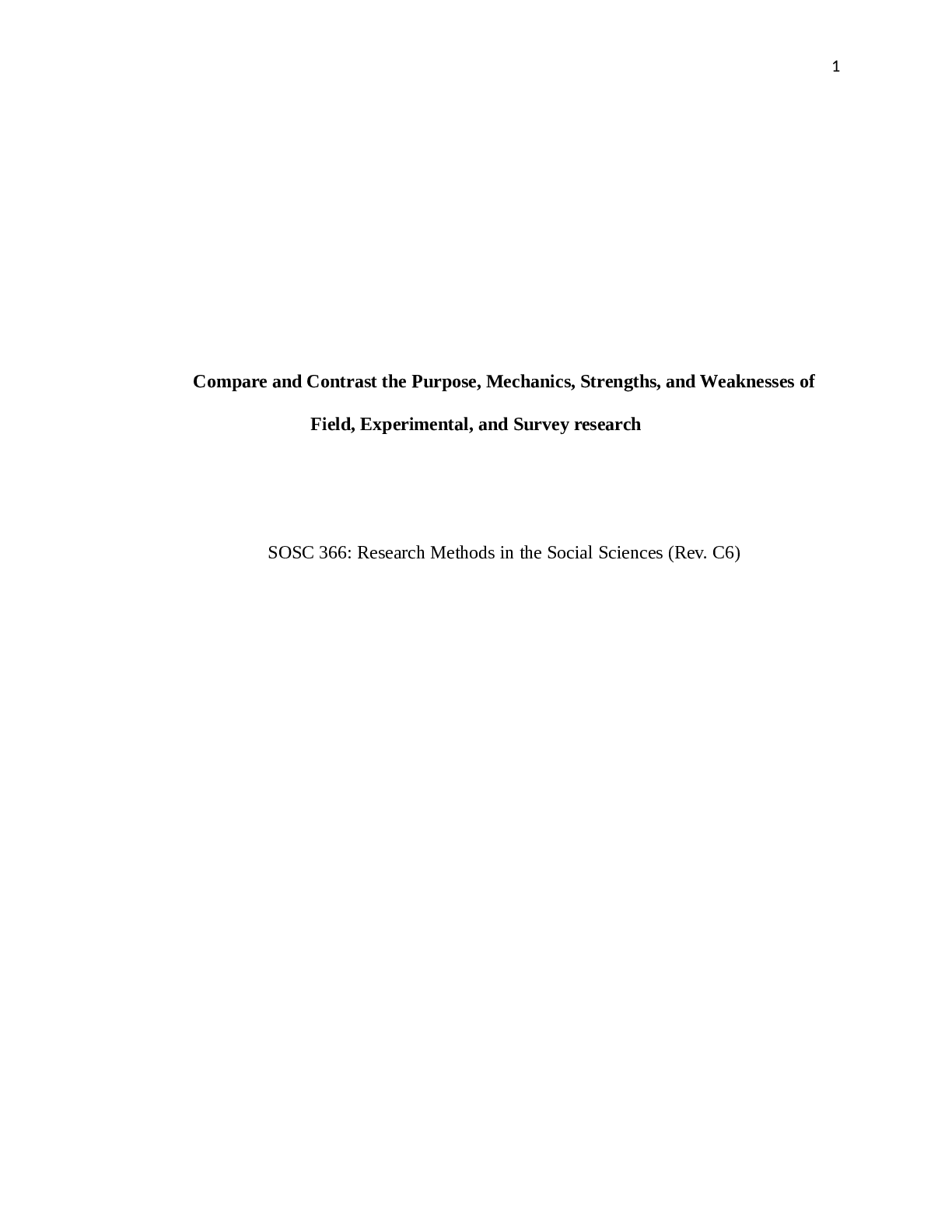
Buy this document to get the full access instantly
Instant Download Access after purchase
Buy NowInstant download
We Accept:

Reviews( 0 )
$7.00
Can't find what you want? Try our AI powered Search
Document information
Connected school, study & course
About the document
Uploaded On
Mar 23, 2023
Number of pages
11
Written in
All
Additional information
This document has been written for:
Uploaded
Mar 23, 2023
Downloads
0
Views
129



